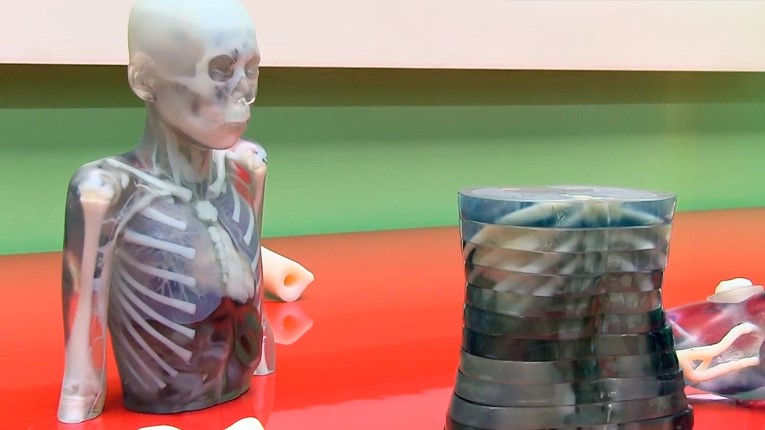Introduction
The medical industry continuously recognizes the added value of additive manufacturing or 3D printing for a massive series of medical applications. The material is basically now recycled for the growth of the fresh surgical cutting and orthopedic implants, prosthetics, and drill guides, along with the formation of patient-specific duplications of blood vessels, bones, and organs.
In 2015, Wohlers discovered that merely 13% of all 3D printing revenue comes from those interconnected to the medical industry. Now more than twenty different implants ranging from cranial implants to knee, hip, and spinal implants permitted by the Food and Drug Administration are created with numerous AM technologies. In addition to the date, more than 100,000 acetabular implants have been shaped by the use of AM, with just about 50,000 of them implanted into patients.
These milestones continue to strengthen AM’s important role in the medical field, where custom products personalized to each individual can be manufactured. This thing recovers the medical professionals and their understanding of patients. It also improves patient comfort level by letting them interact with products specifically designed for their anatomy.
In this article, we’ll discuss the medical field’s necessities that make AM a perfectly suited technology so that it can be recycled for various applications and then present the most mutual methods of data generation for the manufacture of 3D medical models.
The mutual medical industry applications will also be discussed as well as the boundaries and restrictions. In this way, AM must overcome this to impact this corporation further. A series of case studies that have been prepared by the use of AM in the medical business will be presented in the end.
Basic requirements of Medical Industry
Customization:
The personalized use of healthcare means that AM is a perfect way out for the medical business. The AM empowers the formation of prosthetic and orthotic devices personalized to a patient’s specific anatomy enlightening their efficiency instead of constructing thousands of similar components.
Difficulty:
In the older days, traditional manufacturing may have fought to create multifaceted, organic shapes, the designs that AM technologies are now capable of printing are possibly limitless. The thin scaffolds that, without a glitch, follow the outline of a bone or porous metal parts are certainly manufacturable, opening the door to numerous applications and designs that were not previously possible; these include radius, facial bones, and ulna.
Budget:
Other than the capability to generate complex components, AM is suitable for low-volume manufacturing. The distinct nature of production means that costly tooling or machining processes are no longer compulsory. AM technologies also produce merely parts using the material they want to decrease waste and further reduce the costs.
Common applications
Surgical learning tools:
While much of the focus for 3D printing in the medical industry has been around implants and medical devices used by patients, one of the largest application areas has concentrated on anatomical replicas. Historically, clinical training, education, and device testing have relied on the use of animal models, human cadavers, and mannequins for hands-on experience in a clinical simulation. These options have several deficiencies, including limited supply, the expense of handling and storage, the lack of pathology within the models, inconsistencies with human anatomy, and the inability to represent living humans’ tissue characteristics accurately.
Current milestones and Future Goals:
Bioprinting blood vessels:
At Harvard University, scientists are working on a 3D printing system to develop a pattern of a swatch of tissue containing skin cells that can work as blood vessels.
Low-Cost Prosthetic devices:
In collaboration with Autodesk Research and CBM Canada, researchers at the University of Toronto used 3D printing to design cheap and easily customizable prosthetic sockets for patients in the developing world.
Drugs:
Using the 3D printing system, there is a proposition of use by which patients would go to an online drugstore with their digital prescription. Buy the blueprint and the chemical ink needed, and then print the drug at home. In the future, Cronin suggests that we might not sell drugs but rather blueprints or apps.
Medical Tools:
Creating patient-specific models from CT and MRI scans expand from medical research into practical application. This can help surgeons perform operations quickly.
Bone:
In 2011, Professor Susmita Bose of Washington State University modified a ProMetal 3D printer to bind chemicals to a ceramic powder creating intricate scaffolds that promote the growth of bone in any shape.
Heart Valve:
Jonathan Butcher, at Cornell University, has printed a heart valve that will soon be tested in sheep.
Ear cartilage:
Cornell’s Lawerence Bonassar used 3D photos of human ears to create ear molds. These molds were then filled with a gel containing bovine cartilage cells suspended in collagen, which held the ear’s shape while cells grew their extracellular matrix.
Cranium Replacement:
A team of Dutch surgeons at the University Medical Center in Utrecht replaced the entire top portion of a 22 year–older woman’s skull with a customized printed implant made from plastic.
Synthetic Skin:
James Yoo at the Wake Forest School of Medicine in the US has developed a printer that can print skin straight onto burn victims’ wounds. With the ability to scan a wound, the printer can then fabricate the appropriate number of skin layers to fill the wound.
Organs:
Organovo recently announced their bio-printed liver assays’ commercial launch, 3D-printed liver cells that can function for more than 40 days.
Source: 3D Printing Industry
